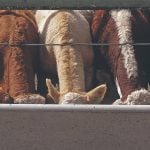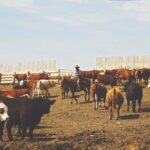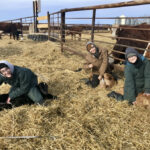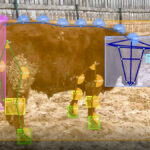
Features

New nasal spray may provide relief from BRD
By focusing on the microbiome in the respiratory system, a new startup hopes to control shipping fever without antibiotics

Mini-internships give ag students hands-on farm experience
A University of Alberta program connects urban students to farmers, and gives farm kids new ag experience, too

Biometrics and artificial intelligence may be coming to a ranch near you
Companies are developing emerging technology to identify cattle, track health, growth and behaviour, and analyze data

Creativity needed to address veterinarian shortage
As demand grows for veterinarians, stagnant graduation rates and steep competition from urban areas have left many rural practices in a crunch

The Environmental Stewardship Award reaches 25-year milestone
National recognition has contributed to the sustainable beef conversation, but people in the industry see more opportunities to reach the public

Pastures hold on to ecological benefits through transition
Pasture managers and patrons are working with conservation groups to preserve these islands of Prairie habitat

Building a career as a livestock buyer
Lyal Fox Jr. reflects on what’s changed, what’s remained constant and what he’s learned over the years buying livestock

Matching economics with reality on the ranch
As Laura and Grant Smith expand their cow-calf operation, they’re applying what they learned from Ranching for Profit to decisions ranging from buying cows to grazing plans

Negligible risk status may mean more market access for Canadian beef
Historic designation opens doors for conversations on removing BSE-era trade restrictions for beef products, feeder cattle access and processing requirements

Measuring production and profitability in beef production
An enterprise analysis can help steer your farm or ranch towards profitability



